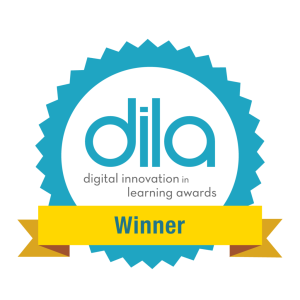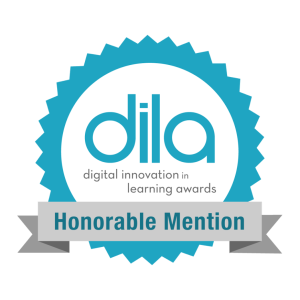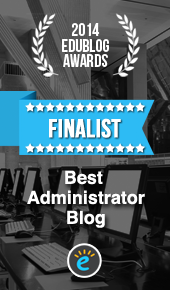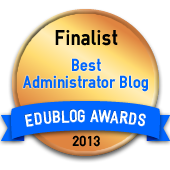Blog Archives
My Friends Don’t Know
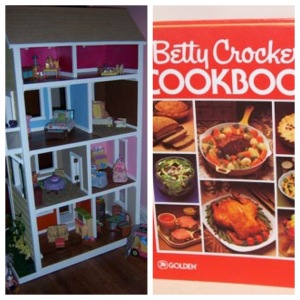
What do dollhouses and cookbooks have to do with teaching & reaching kids? You might be surprised!
-
How will we know?
-
How will their friends know?
-
What is the world counting on us to discover about our students?
-
What’s YOUR talent or passion?
Fast-forward twenty years, and the kitchen in our house is definitely my domain. When my wife and I went to the open house for the home that we now own, I actually sat down in the kitchen for twenty minutes and pictured myself cooking and baking for our family. Culinary discovery has been such a passion of mine for so long it’s something I hope carries over to my own children, and something I need to let my friends and students know about also!
Stop-Motion Virtual Tour
This school year, several students worked on a series of creative videos with our technology teacher, Mr. Hinnenkamp. They learned different video production skills and tinkered with stop-motion, drone photography, GoPros, and more.
Their work was part of an after-school club that provided additional time/support for students to take their learning deeper. Click HERE to view one of the videos the kids created. It’s an innovative twist on the classic virtual tour. We hope you enjoy the stop-motion tour of our school.
Be sure to check out our school’s website for more virtual tours…including one of my ALL-TIME favorites….the link is to a classic tour of our Media Center filmed from the perspective of “The Mouse on the Motorcycle!” You can see from the video that the GoPro held up under some rough conditions!
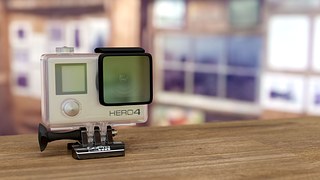
Image Credit: Pixabay
We’d love to hear your ideas for future virtual tours and special effects our students could try out. Please leave a comment or share a link to work your students and staff have created.
The Power of Connection
This week we welcomed former Greenwood Elementary students back home. Several graduating Seniors walked the hallways they once traversed as K-5 students.
Music played over the P.A. system to celebrate returning Alumni. After the “walk” the Seniors took time to reconnect with former teachers and even shared some inspiring advice with our 5th graders. Seeing the power of “connection” is hard to put into words.
This short (2 minute) video captured a few of the hugs, high-fives, and connections that were made. Click HERE to view the video.
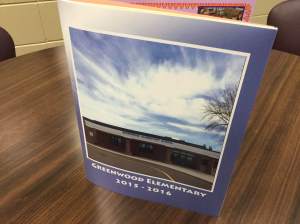
We’ll also be embedding this video into our K-5 students’ yearbooks using augmented reality (AR) technology. To view the video using AR follow these three quick steps:
- Download the Aurasma app
- Follow the “Greenwood Elementary” channel
- Point the Aurasma viewfinder at the cover of the yearbook and watch the magic begin.
In addition to the “Welcome Home” video, we will also include several other fun surprise videos throughout the yearbook that are accessible using augmented reality and the directions above. Enjoy the memories and stay connected!
“Once a Grizzly…Always a Grizzly.”
Image Credits for Video:
Thanks to Adam Hinnenkamp for the drone footage of Seniors as they arrived!
Special thanks to Greenwood Elementary and Wayzata District staff for sharing photos to the #GWgreats Twitter hashtag and shared folder in Google Drive.
Digital Time Capsule (video)

Image Credit: Pixabay.com
Greenwood Elementary School is celebrating its 50th Anniversary this year, so we are planning a birthday bash! In addition to making some more memories at a community cookout (with a DJ playing favorites from the 1960’s as well as today’s hit songs) we wanted to share some of our favorite memories.
Click HERE for our “Digital Time Capsule.” The time capsule is our attempt to honor the past while connecting our school’s rich history to students in a meaningful manner. The 11 minute video will tug at your heart strings, but it will also leave you smiling. Thank you to all the dedicated professionals, families, and volunteers who have invested so much into our students’ lives. Your legacy will always live on.
Our Digital Time Capsule video (above) features the voices of many incredible educators (past and present), but we thought you might like to see more of what our students are currently learning. Check out the four minute video below. I’m excited to see what our students will accomplish the next 50 years!
Can MakerSpaces Invent the Future? (Video)
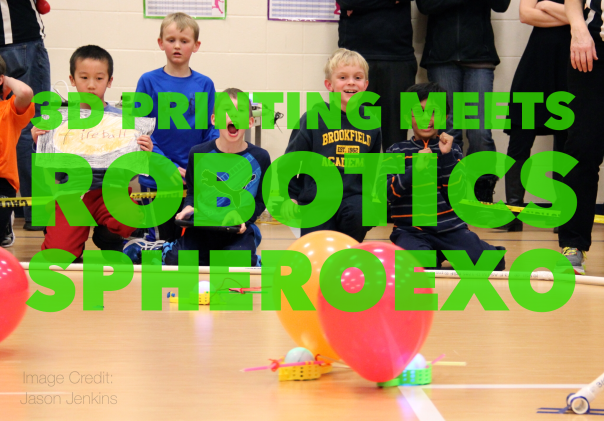 It is incredible what kids can do when we believe in them, coach them, and get out of their way! Our students recently participated in a robotics competition that was invented from the ground up by staff and students. We designed and printed 3D “exoskeletons” that fit over our Sphero robotic droids…and SpheroExo was born. The rest is history.
It is incredible what kids can do when we believe in them, coach them, and get out of their way! Our students recently participated in a robotics competition that was invented from the ground up by staff and students. We designed and printed 3D “exoskeletons” that fit over our Sphero robotic droids…and SpheroExo was born. The rest is history.
Check out the 5 minute video below and prepare to be amazed at what kids can do.
We are so proud of our students and all they are creating, engineering, and achieving. Watch for our students next week as they present SpheroExo to teachers at EdCamp Eau Claire! Students will be sharing their design process and how they’re inventing the future at #EdCampEC.
I’m not sure that MakerSpaces can actually invent the future, but I’m very confident that cutting-edge tools and a culture conducive to innovation helps. A relevant and connected pedagogy empowers all kids to create, connect, and dream bigger.
We Are Greenwood (video)
Our 4th grade podcast crew collaborated on a video project that depicts a year’s worth of learning in just four minutes! Students brainstormed words that described their work and goals for learning. The kids were amazing, and their video speaks volumes about who they are and what they can become.
I’m really inspired by our students, and LOVE the fact that our teachers are so committed to teaching the “whole child” through the arts, character education, and so much more. Click HERE to view their video and to see what our artists, mathematicians, readers, writers, and engineers have been up to the past year or so.
Kindergarten Engineers (Video)

Recently, one of our kindergarten classes worked on a standards-based engineering challenge, and the results were incredible. The truth of the matter is this type of “incredible” is something I see on a daily basis in classrooms across our school. Sometimes I’m able to take a few pictures (or video) and other times I simply stand in awe of the passion and skill our teachers possess. I am amazed at how our team cultivates skills that help students thrive today and excel tomorrow.
When all is said and done, the transmission of graphite to paper provides important practice and achievement data. However, it’s the transmission of curiosity that transcends time. Learning how to learn, overcoming failure, and working together to create something more beautiful than any of us could create alone is where the magic is. When digital age skills and a relevant pedagogy are part of the achievement process kids win.
This three minute VIDEO highlights the process we used for a lesson with Edison robots. Getting a glimpse of the conversation and steps our kindergarten students followed is pretty special. I also think that sharing some of the activities that our teachers are facilitating is good for all kids. When educators share their insights a global ecosystem of learners benefits from the ensuing conversations. Shining the light on best practices, innovation, and the work our dedicated teachers are doing helps us all understand how we might serve students in a more relevant and relational manner. It’s not about the robots!
Edison robots are the tool featured in this video, but they are not the reason this learning experience was incredible. The mindset and approach that Mrs. Amy Westman used made this learning transformational for kids. (A connected teacher with a growth-mindset is more important than any robotic device.) Amy and her colleagues demonstrate this on a daily basis. I’d suggest following @MrsAmyWestman on Twitter. She’s one of seven phenomenal kindergarten teachers in our school, and she shares some great learning highlights throughout the week.
Standards and Mobile MakerSpaces:
Lastly, one of the kindergarten standards that guided the lesson was 0.8.1.1 1. “Prepare for and participate effectively in a range of conversations and collaborations with diverse partners, building on others’ ideas and expressing their own clearly and persuasively.” We used one of our Mobile MakerSpace carts to bring this challenge to students, and to breathe relevance into the standards.
Classroom Twitter Chat #StuConnect
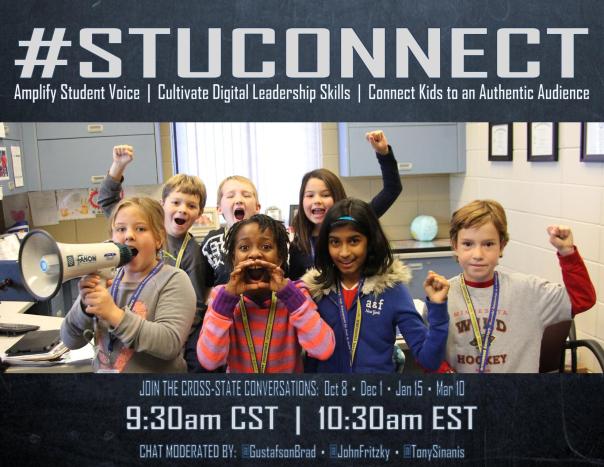
Join classrooms across the country as we celebrate the books we love on Friday, January 15, 2016 at 9:30am CST. Be sure to add the #StuConnect hashtag to your classroom tweets when responding to the questions below.
Q1 What book are you reading independently right now? What book is your teacher reading aloud to you? Which would you recommend?!
Q2 If you could meet a favorite character from a book, who would you choose?
Q3 What’s on your classroom’s Top 10 “Must Read” list?
Q4 If you could create a new book award what would you name it? What book would you nominate and why?
The entire twitter chat will only last 15-30 minutes. Feel free to join us for one question or stick around for the entire chat. All grade-levels are welcome to participate.
We will share out a new question every five minutes or so. Classrooms can respond to specific questions by starting their Tweets with the letter “A” (stands for Answer) and adding the hashtag #StuConnect to the very end of each Tweet.
Feel free to prepare pictures and video ahead of time. For example, if your students would rather design a new book award drawing to respond to question four they are more than welcome to. Creativity is appreciated, but a love of literacy and cultivating digital leadership skills are the ultimate goals!
Special thanks to my friends and #StuConnect co-moderators John Fritzky (NJ) and Tony Sinanis (NY). We’ll also be joined by a Greenwood student serving as honorary co-moderator and “Principal for the Day!” We hope you can join us for the live Twitter chat at 9:30am CST on Friday, January 15th.
Alternate Endings
This is a guest blog post written by Mrs. Emilie Garwitz. Emilie is a Kindergarten Teacher at Greenwood Elementary, and this is her first blog post. Please connect with her on Twitter @MrsGarwitz and throw some support/encouragement her way. (Emilie and her team are doing some extraordinary work with students.)

We all know the endings to familiar stories: the shoe fits, Cinderella marries the prince, and Harry Potter defeats Voldemort to save the wizarding world. We find ourselves often thinking and talking about endings long after we have finished reading. Generations of teachers have challenged learners to use their creative talents to write alternate endings to these beloved tales. But how do we tailor this classic method to our current generation of learners – the next innovators in our world? In what ways can we apply 21st century skills such as collaboration and creativity to the learning experience and standards? And, what if the artifacts of learning lived on beyond the lesson using digital tools relevant to young students?
Recently, my kindergarteners have been fascinated by the alternate endings to the gingerbread man story. I wanted to take their energy and dive deeper. The classic method would have been to have my students use their creativity to write a new ending. And the challenge was that kindergartners’ writing skills and stamina are still developing. So I asked myself, what motivates them? What tools can I give them to help them be successful when so many of their skills are still in progress?
This is when I turned to our school’s mobile Makerspace carts and challenged my students to build alternate endings to the gingerbread man. The objective was kindergarten friendly: I can create a new ending to the gingerbread man using legos. The results were astounding. My students planned, collaborated, shared, built, created, and reflected for over an hour – a long time our youngest learners. Their creativity stretched well beyond my highest expectations and the experience was authentic and meaningful. They changed the characters, the setting, and more. One group’s version of the story had a copy machine that the gingerbread man used to make twenty copies of himself in order to outfox the fox.
“We’re engineering!” one student exclaimed. This was the moment when I started thinking about the possibilities for their future. I was not just teaching a skill, I was imparting on kids a new mindset – an engineering mindset. Building their alternate endings was cross-curricular. During the planning stages, I looked up how many standards connected to this objective and was blown away.
While learning to write and practicing writing are critically important, this whole exercise made me reflect on the choices I make as a teacher. Maybe I should not limit their tools in the classroom when it’s time to create. How could using tools that are relevant and motivating to students change the learning experience?
After an hour of innovating, it was time to take apart the creations – such a hard thing to do for both teachers and students after so much time, effort, and creativity are spent. But what if the learning does not stop when the last lego brick is cleaned up? What if we could make time in the classroom to help students’ ideas and work live on? Enter, Google Drive. When students take pictures of their own work, upload it, and share via the Drive with their families, they truly own every step of the learning experience. Digital learning is relevant to students and the ability to share learning with families helps connect us.
Every teacher savors that moment when her students achieve bigger things than she ever dreamed possible. Witnessing 5 and 6 year-olds upload photos of their creations to Google Drive was one of those seminal moments. Most people might hear “Google Drive and kindergartners” and think “that can’t end well.” I guess you could say my class created an alternate ending of our own.
Within Reach

The teacher-observation process provides me access and insight into classroom learning experiences that very few people have. I’m consistently inspired by the relevant and connected learning I observe. Recently I was in a classroom and I didn’t want the lesson to end. As I was watching the lesson unfold, I knew that what I was experiencing was also within reach of classrooms and schools everywhere.
Here are some of the salient things I observed during the lesson:
- I observed an elementary Language Arts lesson.
- A clear learning target based upon state standards guided the learning process.
- The teacher used one of our Mobile MakerSpace carts to teach students how to create an alternate ending to a text by manipulating various elements of the plot.
- Students constructed models depicting their alternate story endings using Lego building bricks from the MakerSpace cart.
- Students were empowered to collaborate on plans for their alternate story endings and projects.
- Students had opportunities to talk, create, experiment, fail, and redesign.
- The teacher purposefully connected with individual students and small groups to elicit high-level thinking and scaffold as appropriate.
- Formative assessment was seamlessly interwoven through the lesson.
- Students presented their creations to the class near the conclusion of the lesson. This public speaking provided students time to explain their thinking, and the teacher was able to use some metacognition connected to the learning target.
- Students used digital tools to curate their work so it could be referenced in the future and shared with parents.
- As part of this process, students photographed their projects and uploaded them to Google Drive to share their learning with their families.
- Students did not want the lesson to end. (Based on what I was seeing, kids would’ve opted to skip recess if given the opportunity.)
- The teacher ensured that the lesson was led by learning; not tools, technology, or activities.
- This was an authentic learning experience that was scholarly and highly relational.
Did I mention that this was a kindergarten language arts lesson?! That’s right…our youngest learners were empowered to innovate, collaborate, present, and curate their work using digital tools.
At one point one of the kindergarteners yelled out in exuberence, “Teacher…we’re engineering!” and her amazing teacher responded, “Yes…you are designing and building.” Kids were making connections to past conversations about design, building, and engineering.
During our observation post-conference I invited the teacher to share her reflections in a blog post instead of the traditional electronic form required by the district. I knew that we could meet the requirements of the standard district form by copy/pasting reflections from a blog post if the teacher was interested in pursuing this. (Stay tuned for her reflections and first blog post…)
I am convinced that a paradigm shift is underway in education because I see it every day at Greenwood Elementary. A new and connected learning paradigm that puts students in the center of their learning is possible. Deeper learning that’s both relevant and connected is within reach!

Image Credits:
1.) “Sparkler” photo from Pixabay (Creative Commons)
2.) “Kindergarten Collaboration & Digital Curation” photo from Greenwood Elementary



